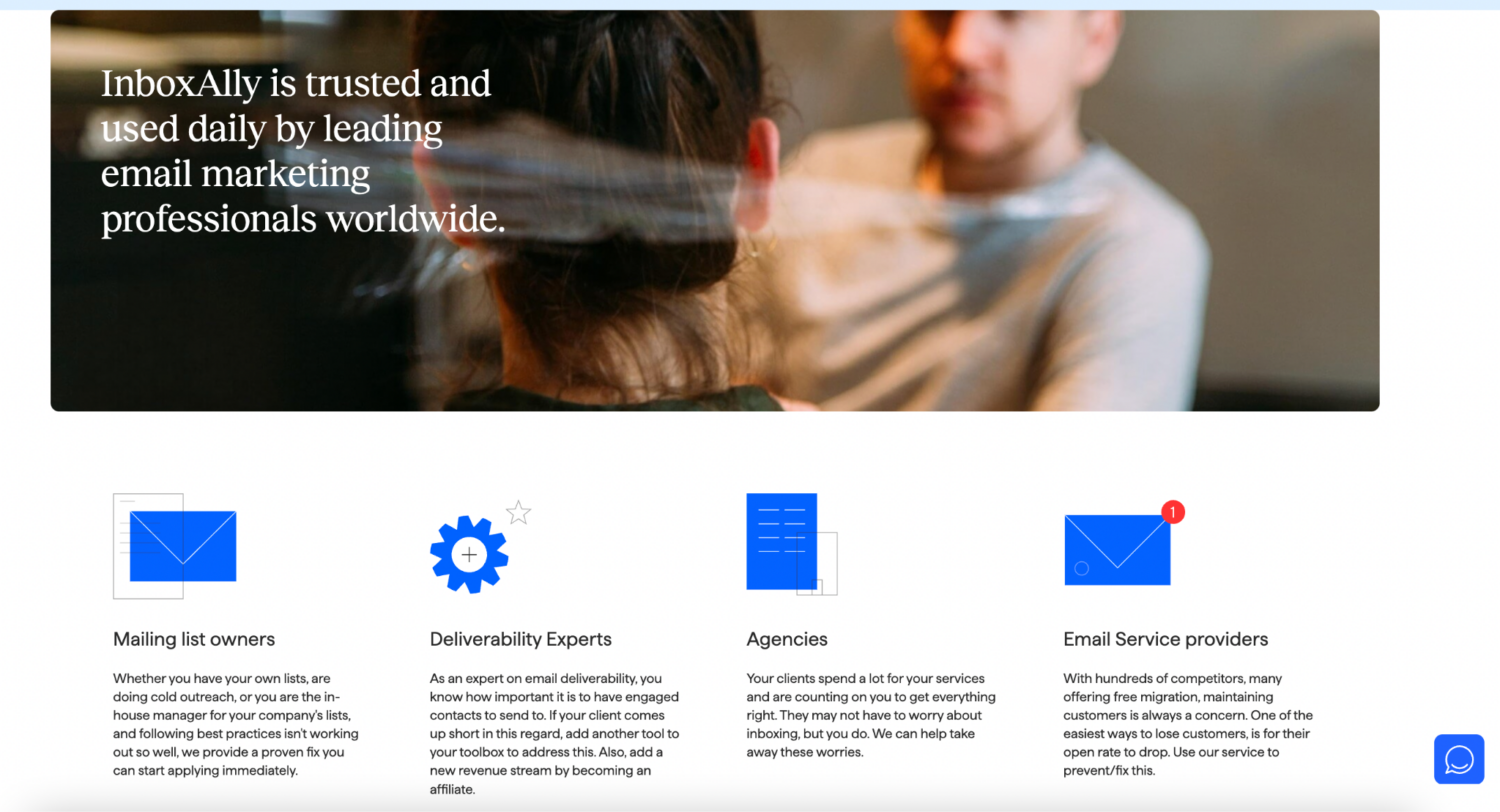When it comes to cold emailing, the length of your emails plays a crucial role in their effectiveness. Finding the ideal length is also a common concern for those engaged in cold email campaigns.
Whether you’re writing a sales email, prospecting email, or initiating a cold email campaign, understanding the ideal word count and implementing the right strategies will help you achieve your goals.
In this article, we will answer the question of how long should a cold email be, discuss subject line tactics, and provide insights into crafting compelling and personalized messages.
By following these principles and developing a solid cold email strategy, you can increase your chances of engaging recipients, nurturing relationships, and driving successful outcomes in your cold email marketing endeavors.
But first, let’s find out why your cold email length matters.
Why Does Cold Email Length Matter?
The length of a cold email significantly impacts the reader’s perception and engagement. A concise and focused message demonstrates respect for the recipient’s time and increases the likelihood of capturing their attention.
Long, verbose emails often lead to fatigue and can be easily dismissed or deleted. On the other hand, overly short message emails may appear generic or insincere, failing to establish a meaningful connection.
By crafting well-structured emails of appropriate length, you can effectively communicate your value proposition and encourage a response. Therefore, writing cold emails that are concise and direct to the point is best.
How Many Lines Should a Prospecting Email Include?
The number of lines in a prospecting email depends on various factors, such as the content and purpose of the email.
As a general guideline, aiming for three to eight short paragraphs or around four to 10 lines is advisable. This length allows you to provide enough information while keeping the email concise and focused.
In addition, short paragraphs maintain readability, enabling the recipient to scan the email and grasp its key points quickly. Therefore, it’s essential to adapt the length based on your recipient and the level of personalization required.
Read also: Does Cold Emailing Work?
Why You Should Avoid Cold Emails That Are Too Short
Avoiding short cold emails is crucial in cold emailing. While brevity can be effective in certain contexts, overly short cold emails may fail to deliver the intended message and impact. [1]
When writing sales emails or engaging in cold outreach emails, it’s important to strike a balance between conciseness and providing enough information to capture the recipient’s attention.
Cold emails with insufficient content may also be spammy or lacking value. As a result, it diminishes the chances of generating a positive response. Therefore, crafting personalized cold emails that incorporate effective subject lines and sufficient email length is key to maximizing engagement and achieving desired outcomes.
By implementing cold email strategies that align with the same principles of effective writing and personalized communication, your chances of success increase.
So, remember to avoid overly short messages and focus on crafting well-rounded, personalized cold emails that leave a lasting impression on your prospects.
10 Best Practices on How to Write the Perfect Cold Email
![]()
Source: Pexels
1. Write an Intriguing Subject Line
When it comes to cold emailing, the subject line holds tremendous importance in capturing the prospect’s attention and increasing the likelihood of engagement. Simply put, a well-crafted catchy subject line can make or break your cold email’s success.
Personalized cold email subject lines have also shown higher response rates and engagement. More specifically, addressing the recipient’s name or mentioning details that resonate with their interests or pain points can pique their curiosity. It also makes them more likely to open your email.
Remember to keep your subject line concise and to the point. Avoid using vague or lengthy phrases that may get lost in the recipient’s inbox. The optimal email length for subject lines is usually around six to nine words, as data suggest that shorter subject lines tend to generate higher response rates. [2]
Additionally, ensure your cold email subject line aligns with the content and conveys the value or benefit. Use compelling language that sparks curiosity, addresses a problem, or offers a solution.
Use creative and catchy subject lines that grab the prospect’s attention to stand out. Experiment with humor, curiosity, or intriguing statements to entice the recipient to open your email.
Another way is to test different subject lines to gauge their effectiveness. A/B testing allows you to compare response rates and determine which subject lines resonate best with your target audience.
Constantly refining and optimizing your subject lines based on feedback and data analysis can significantly improve your cold email campaigns.
2. Come Up With a Clever Introduction
The introduction of your cold email is the first impression you make on the recipient, so it’s crucial to grab their attention right from the start.
Begin your cold email with a personalized opener that shows you’ve done your research. For instance, mention a common connection, recent event, or something specific about the recipient’s work to demonstrate your genuine interest. [3]
You can also engage the recipient by asking a thought-provoking question related to their industry or pain points. This approach stimulates their curiosity and encourages them to read to find the answer.
Another tip is to start your email with a surprising statistic or industry insight that grabs attention and emphasizes the value you can offer. This demonstrates your expertise and positions you as a credible source of information.
Injecting humor or creativity into your email introduction can also make you stand out. However, be mindful of the recipient’s professional context and ensure your humor aligns with their taste.
3. Keep It Concise and Focused
In a fast-paced business environment, brevity is key. Therefore, keep your email concise and focused to maximize its impact.
Avoid lengthy explanations or unnecessary details that may overwhelm the recipient. Instead, clearly state the purpose of your email and get straight to the point. Don’t forget to maintain a clear and concise narrative throughout the email.
Dense blocks of text can be daunting and may discourage the recipient from reading the entire message. Instead, aim for clarity and easy comprehension by writing short sentences and paragraphs to enhance readability.
In addition, use formatting techniques like bullet points or bold text to emphasize important information. Doing so allows the recipient to quickly scan the email and grasp the main points without reading every word.
4. Offer Value in Your Pitch
Source: Pexels
Including value in your cold email is crucial. When writing cold emails, it’s important to remember that your recipients receive numerous similar emails daily. Therefore, you must provide something valuable to stand out and capture their interest.
For instance, offer relevant information, insights, or solutions to their pain points. Doing so shows that you have taken the time to understand their needs and are genuinely interested in helping them. This personalized approach also increases the likelihood of a positive response and engagement.
Share valuable resources relevant to the recipient’s interests or industry, such as articles, case studies, or reports. It demonstrates your expertise and positions you as a helpful resource.
Lastly, clearly articulate the unique value you bring to the table. For instance, highlight what sets you apart from competitors and explain how your product, service, or expertise can specifically benefit them.
5. Use Personalization
Personalization is key to establishing a genuine connection and increasing the chances of a positive response. Consider the following personalization strategies:
First, use the recipient’s name instead of generic salutations like “Dear Sir/Madam.” This small gesture demonstrates that you’ve taken the time to identify and acknowledge them as an individual.
Secondly, if you have any previous interactions or mutual connections, mention them in your email. Doing so establishes common ground and can foster a sense of familiarity and trust.
You can also tailor your email content to align with the recipient’s specific role, industry, or challenges. Doing so shows that you understand their unique circumstances and increases the relevance of your message.
Craft a subject line that resonates with the recipient and piques their curiosity. Incorporate their name, company, or a specific pain point. Doing so makes the subject line more personalized and compelling.
Read also: Personalized Cold Email – A List of Best Practices That Work in 2023
6. Use Social Proof
Social proof is another powerful tool in cold emailing that establishes credibility and builds trust with your prospects. Including testimonials, case studies, or success stories provides real-world evidence of the value and effectiveness of your product or service.
When prospects see that others have had positive experiences and achieved desirable outcomes, they are more likely to trust your offering and consider taking the next step.
To incorporate social proof effectively, select testimonials or case studies relevant to your target audience. For instance, highlight specific results or benefits that align with the pain points or goals of your prospects.
By showcasing how your solution has helped others overcome challenges or achieve success, you demonstrate your expertise and establish yourself as a trusted authority in your industry.
In addition to written testimonials, include social media mentions, customer reviews, or industry awards to bolster your credibility further. Visual elements such as logos of well-known companies you’ve worked with can also enhance your reputation.
However, obtain permission from your clients or customers before using their testimonials in your cold emails. Doing so ensures that you maintain ethical practices and build genuine relationships with your prospects.
7. End With a Call-To-Action
A well-crafted and compelling call-to-action prompts prospects to engage further, increasing the likelihood of conversion and more meetings. Encourage the recipient to take a specific action, such as scheduling a discovery call, requesting more information, or following a link to learn more. [4]
When crafting the call-to-action for your cold email, be direct and specific about the desired action you want the recipient to take. Use language that also conveys a sense of urgency and importance.
For example, instead of saying, “Feel free to reach out if you’re interested,” you can say, “I would love to schedule a discovery call with you this week to discuss how our solution can address your specific pain points.”
Providing clear instructions on how to proceed is also important. Include relevant contact information, such as your email address or phone number. Consider adding a clickable button or link to make it easy for them to take action.
By making the next steps as straightforward as possible, you remove barriers and increase the likelihood of a response. You also guide prospects toward the desired outcome and create opportunities for further engagement and meaningful conversations.
8. Personalize the Closing
Personalizing the closing of your email allows you to create a genuine connection with the recipient. For instance, use the prospect’s name and, if appropriate, mention any relevant details or pain points you discussed earlier.
Tailoring the closing statement shows that you’ve taken the time to understand their needs. It also reinforces the personalized approach you’ve taken throughout the email.
9. Proofread and Test
Before sending your cold emails, proofread them thoroughly to eliminate any errors or typos. Pay attention to grammar, spelling, and formatting.
Additionally, test your emails by sending them to yourself or someone to ensure they appear correctly on different clients and devices. This step helps you maintain a professional image and ensures your message is effectively conveyed.
10. Follow Up Strategically
Following up is crucial in cold emailing. Develop a follow-up email strategy with multiple touchpoints. Doing so allows you to stay on the prospect’s radar and nurture their interest.
In addition, customize your follow-up emails based on previous interactions, addressing any concerns or questions they may have. Combining persistence and personalization increases response rates and conversions.
Related: Cold Email Open Rates
Using InboxAlly to Ensure Your Email Lands in Your Prospect’s Primary Inbox
InboxAlly ensures your email lands in your prospect’s inbox through a combination of engagement and reputation-building techniques. When you use InboxAlly, unique seed email addresses provided by the service are included in your recipient list. [6]
These seed emails actively engage with your content by opening, reading, clicking links, marking them as important, and even replying to emails.
This engagement sends a positive signal to inbox providers, indicating that your emails are valuable and deserving of delivery to the primary inbox.
As a result, InboxAlly helps improve your sender reputation, increases deliverability rates, and enhances the chances of your email reaching your prospect’s primary inbox, where it is more likely to be seen and acted upon.
Final Thoughts
Source: UnSplash
The length of a cold email should be concise and focused, capturing the recipient’s attention while providing enough information to convey your message effectively.
While there is no strict rule on the ideal cold email length, it is generally recommended to keep it short, ranging from 50 to 125 words.
Remember, the goal is to pique the recipient’s interest and encourage further engagement. By following the principles of brevity, clarity, and personalization, you can optimize your cold email length and increase the chances of eliciting a positive response.
So, write cold emails strategically, respect the recipient’s time, and maximize the impact of your communication.
Take control of your email deliverability and ensure your messages land in the right place with InboxAlly. Maximize engagement, boost open rates, and secure your spot in your prospect’s primary inbox. Book a free live demo now.
References:
[1] https://www.quicklines.ai/post/how-long-should-a-cold-email-be
[2] https://www.marketingcharts.com/digital/email-online-and-mobile-79768
[3] https://www.autoklose.com/cold-email-opening-lines/
[4] https://skrapp.io/blog/how-to-write-a-cold-email-call-to-action-with-examples/
[5] https://www.inboxally.com/blog/cold-email-follow-up-how-to-get-your-prospect-to-respond


